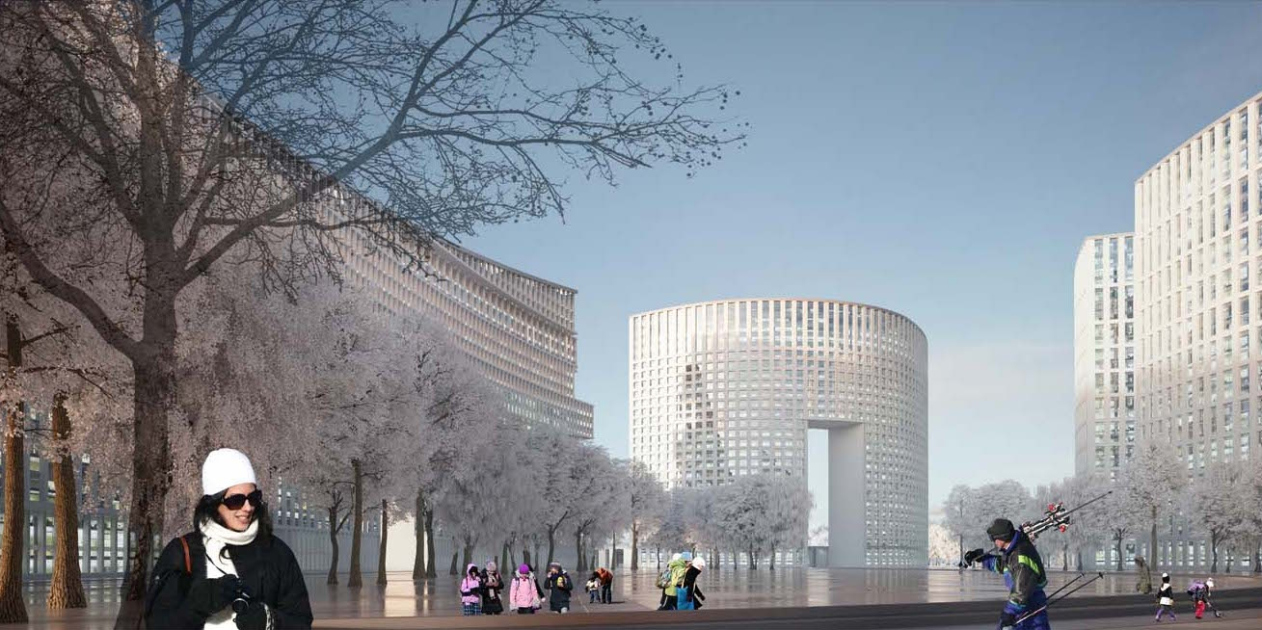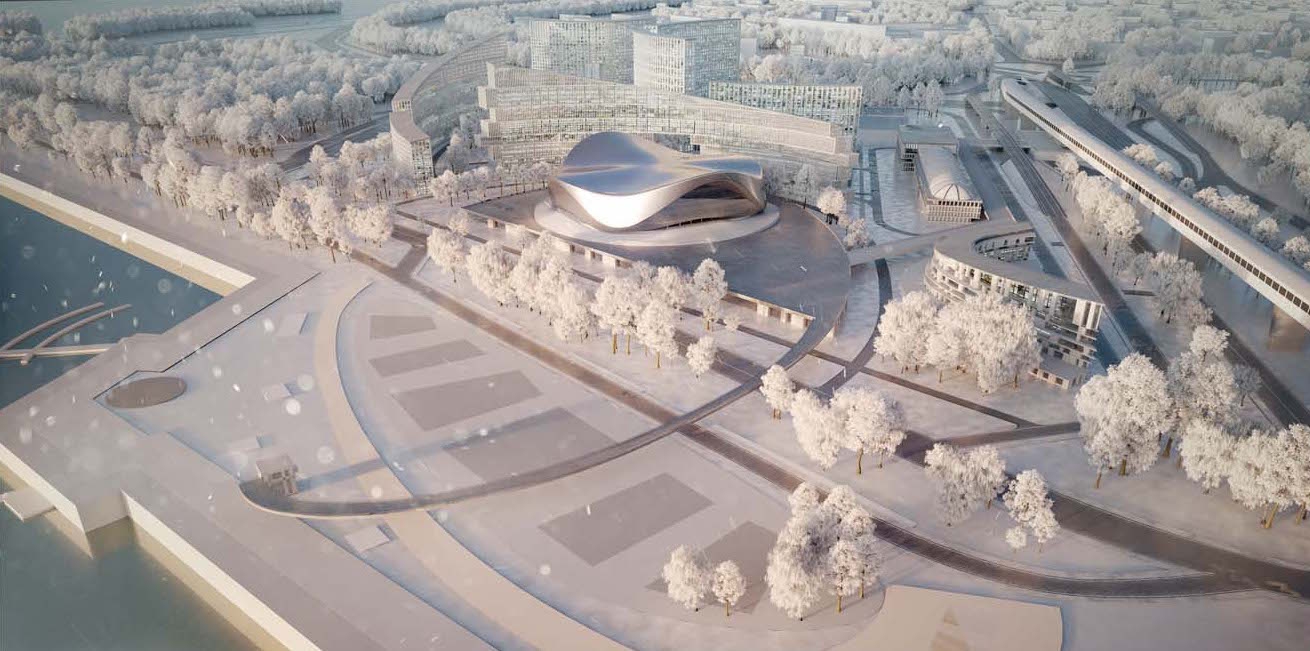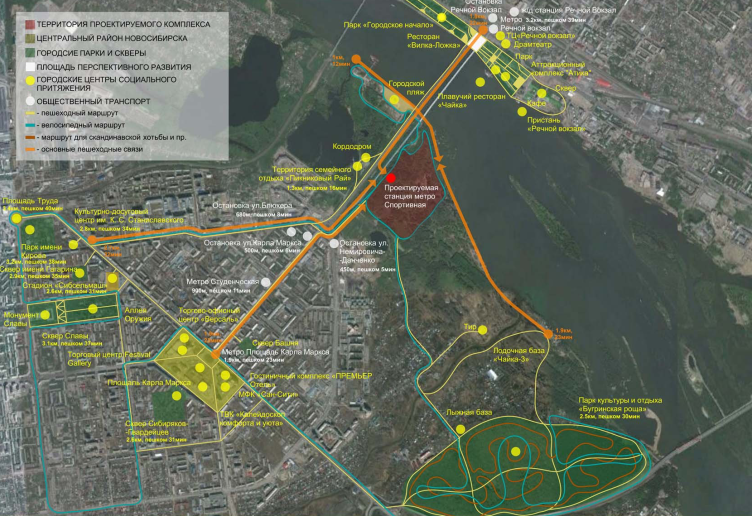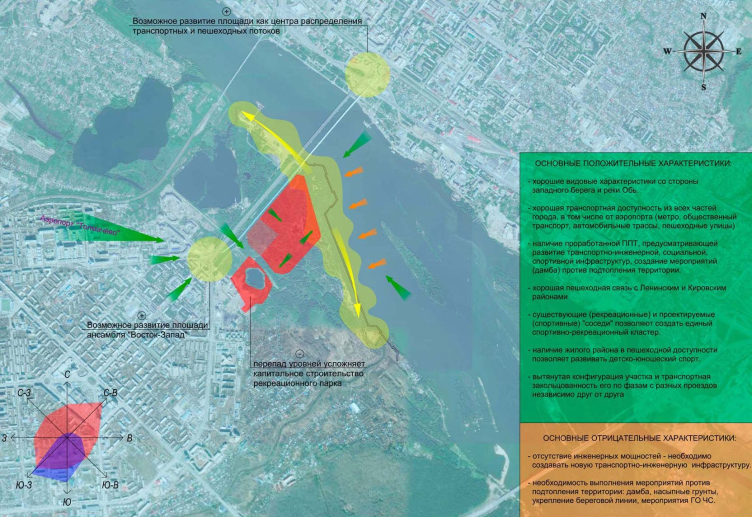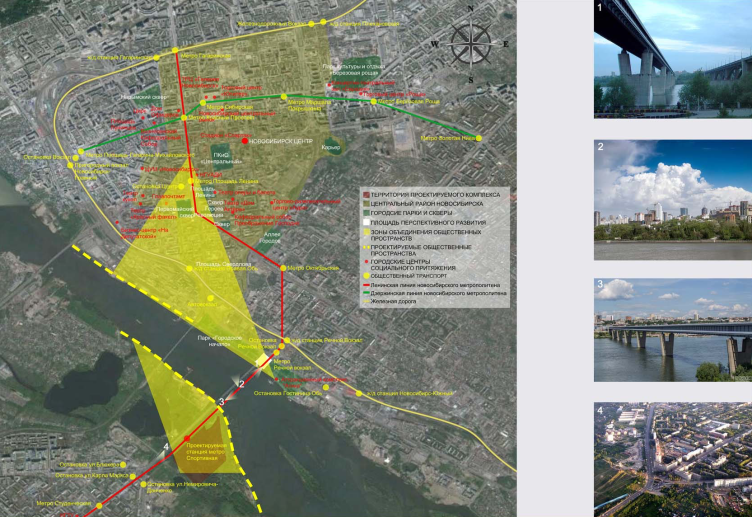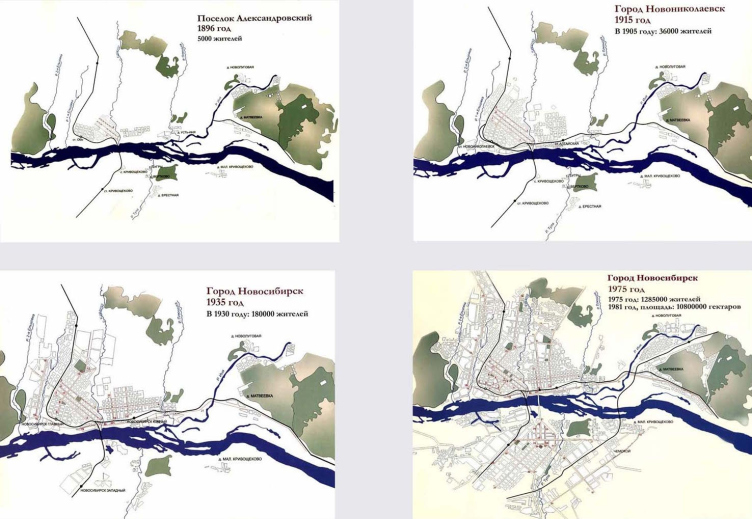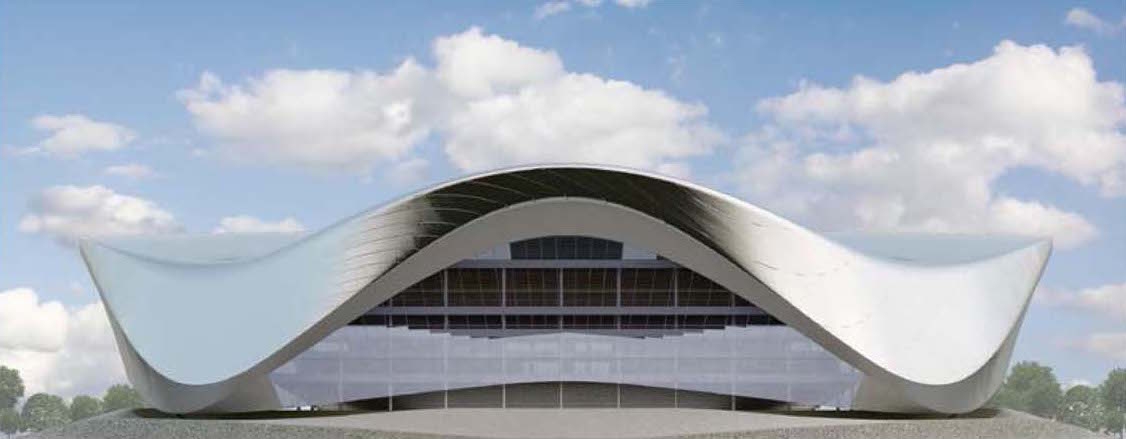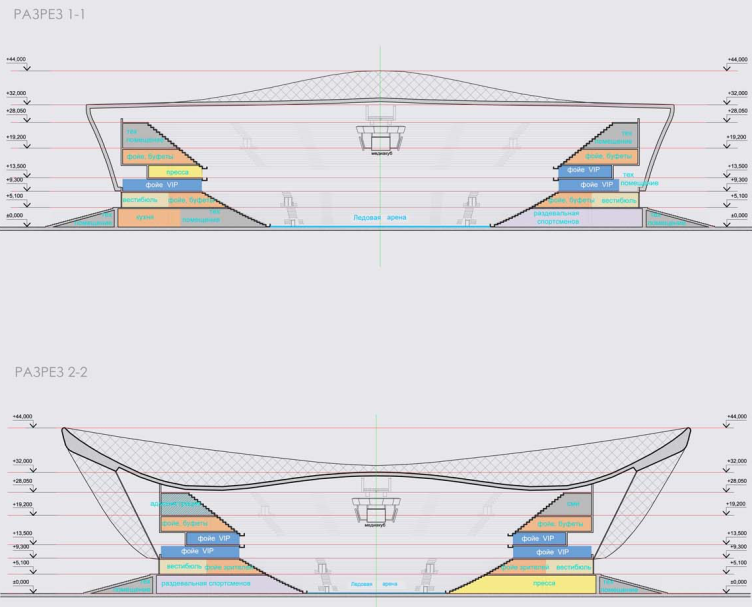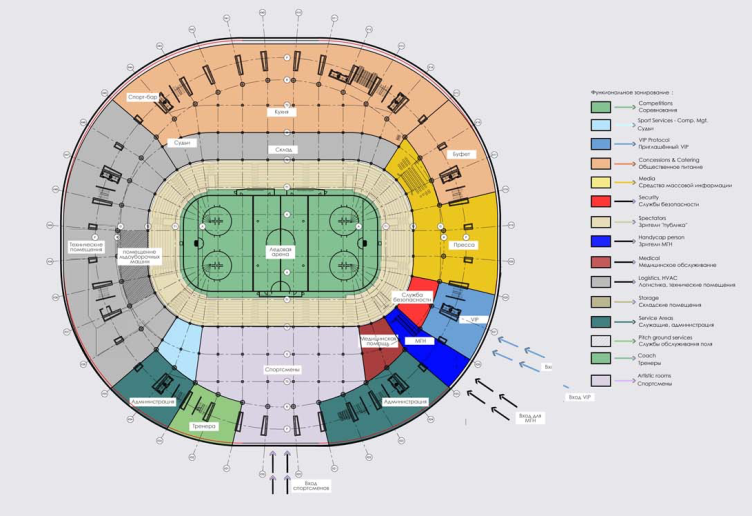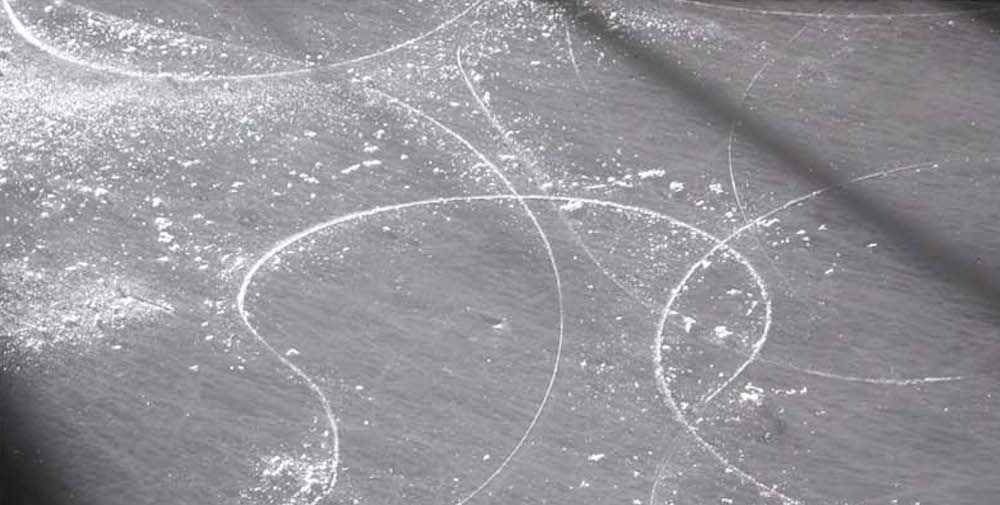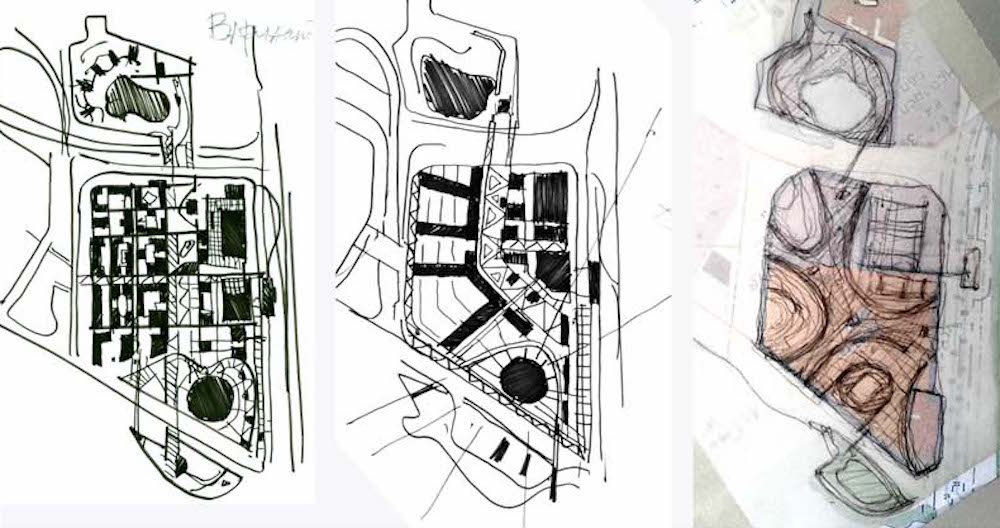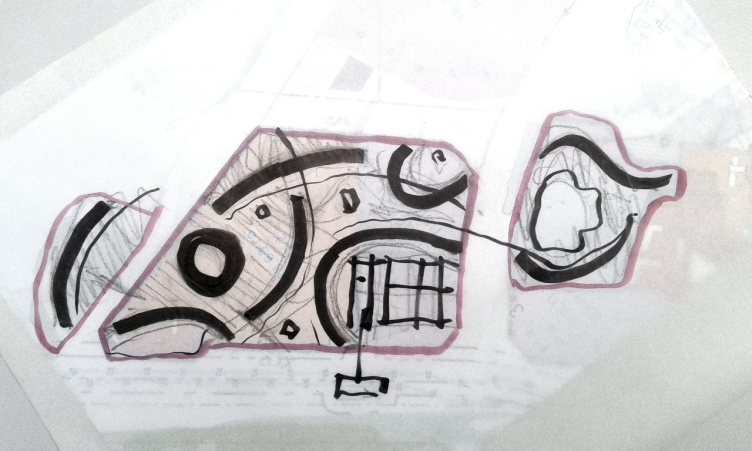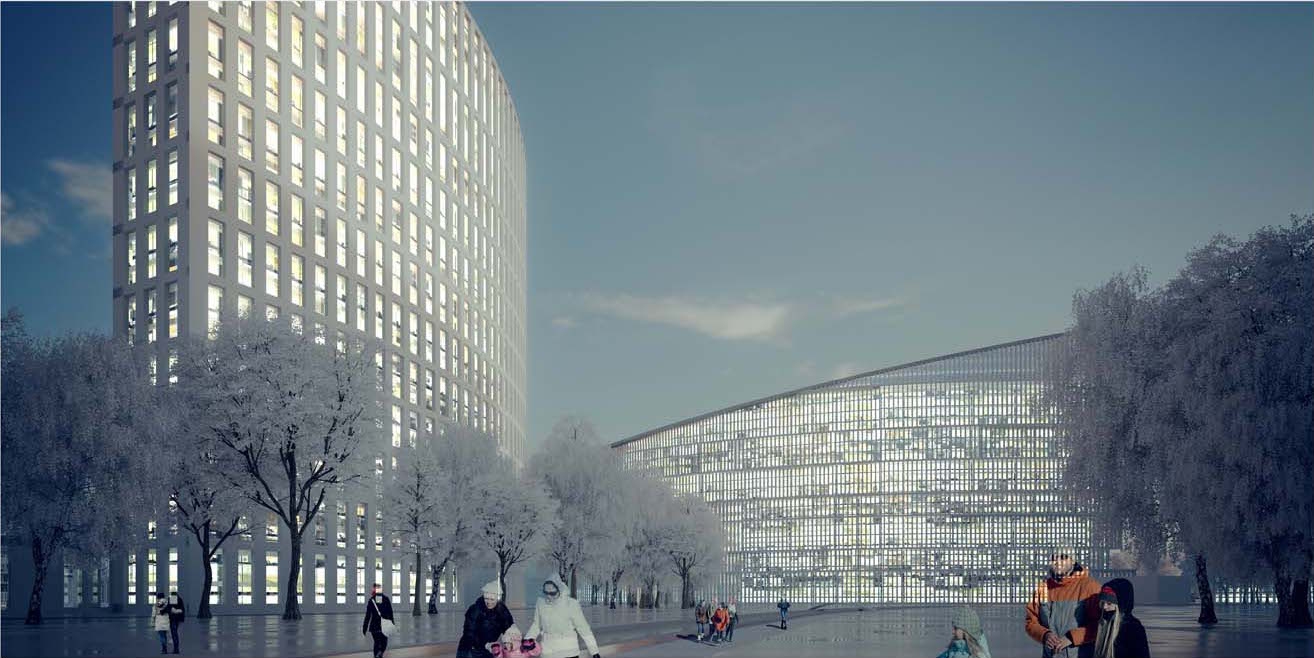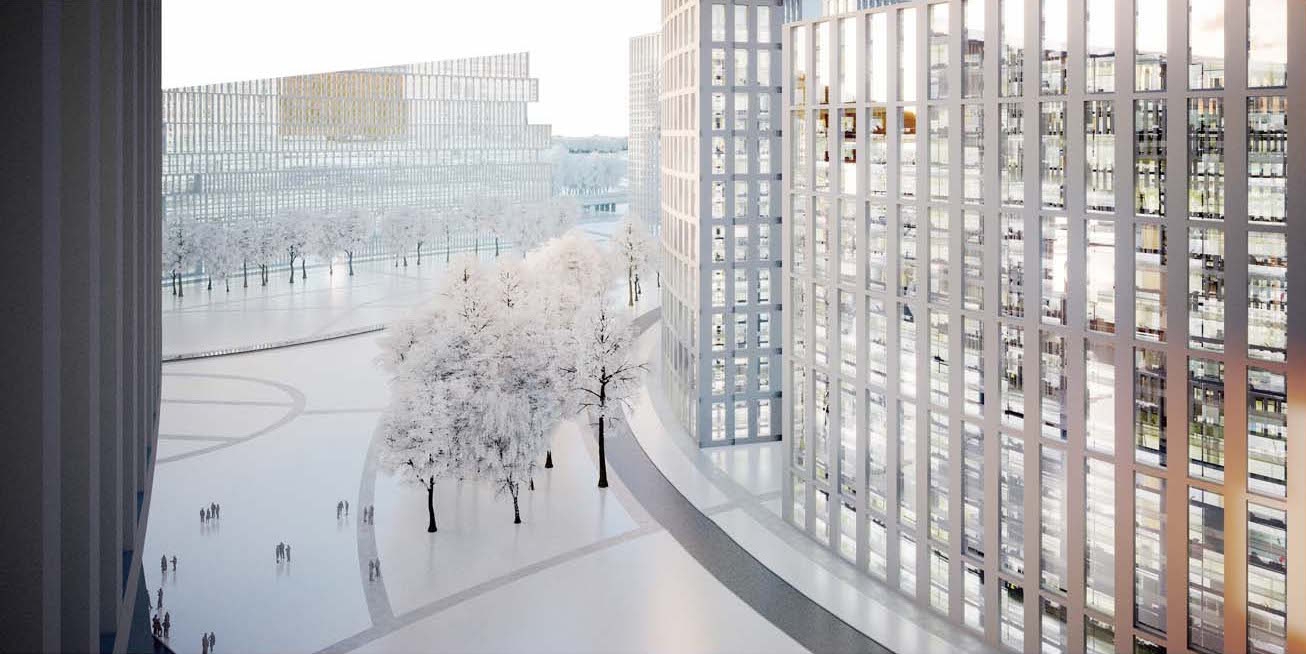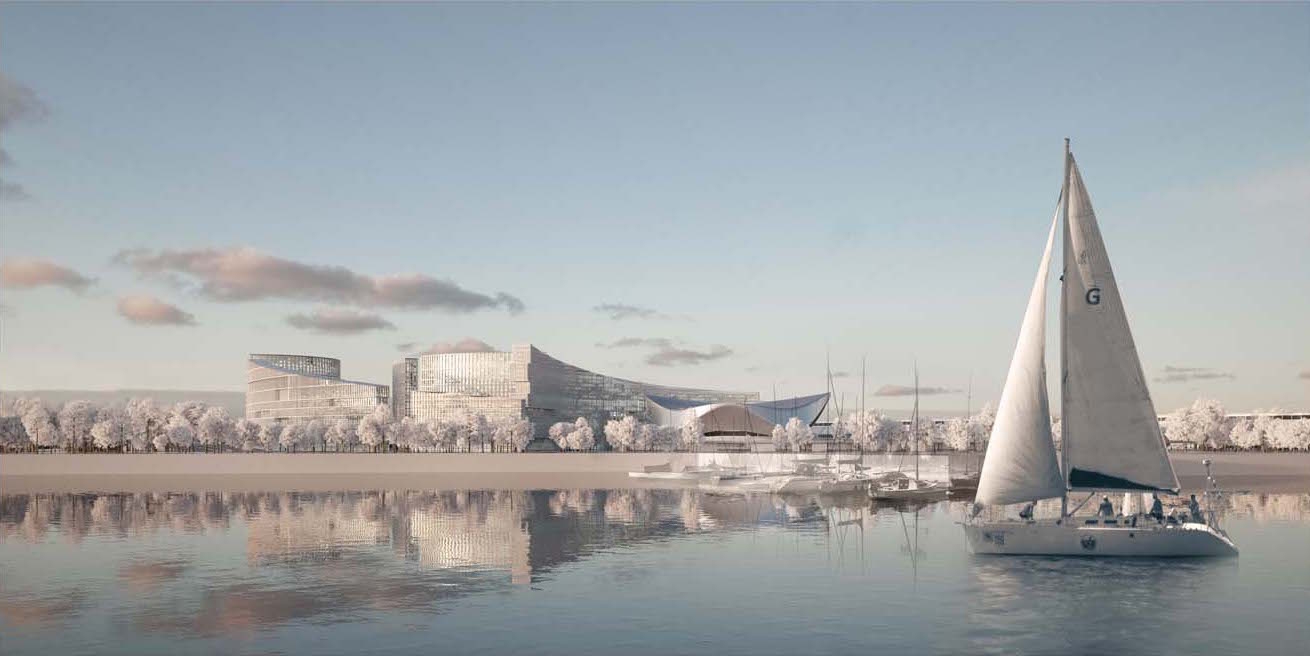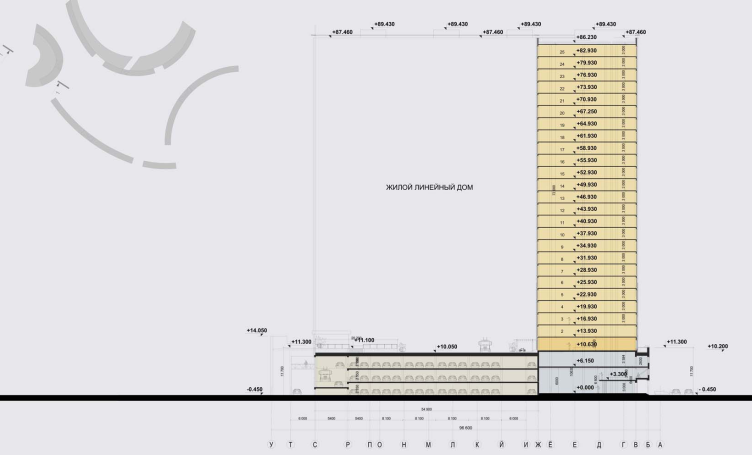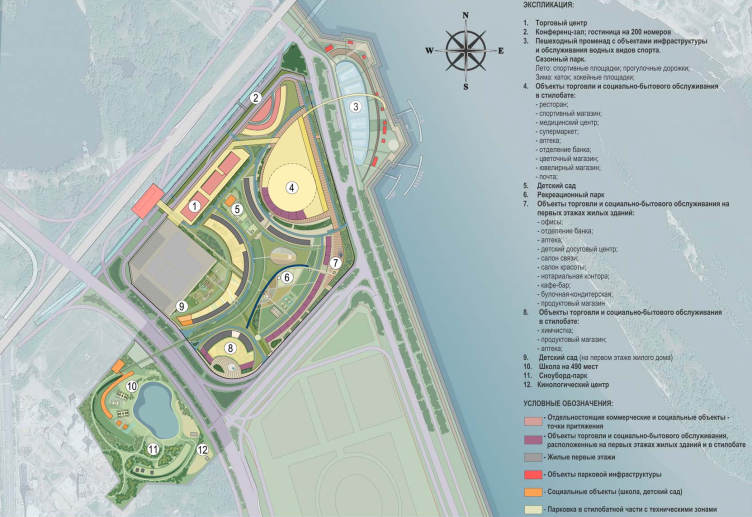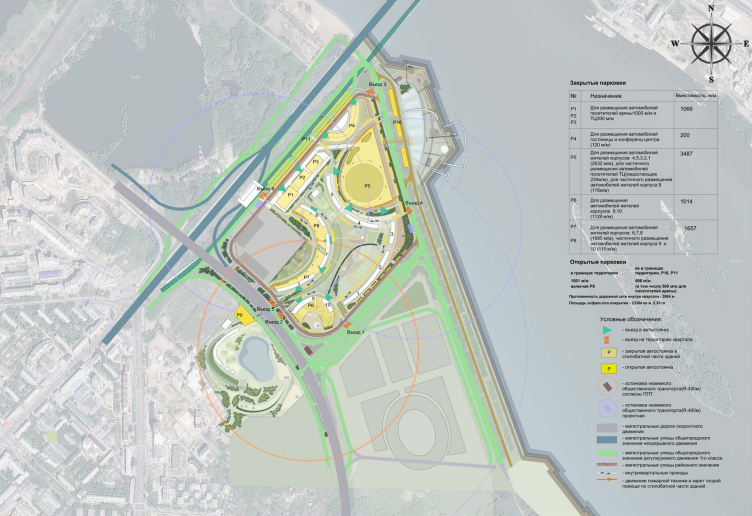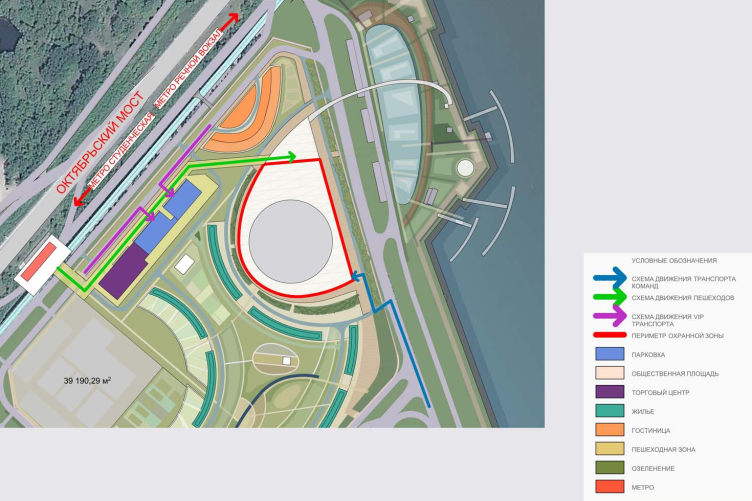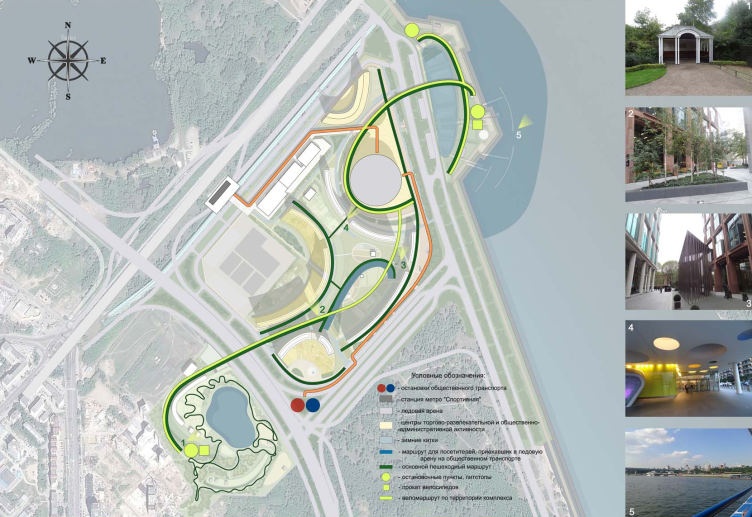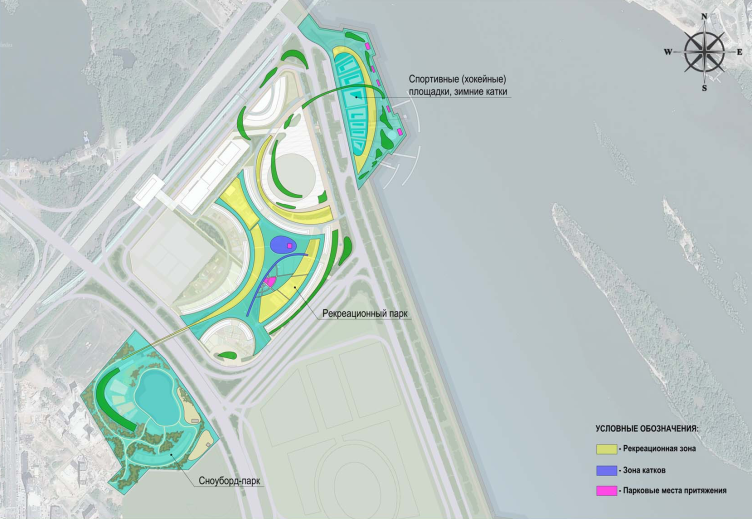“Hockey is absolutely my element and a happy hobby; this spectacular and temperamental game is unquenchable, just as the human thirst for rivalry and self-realization” – Valery Kharlamov.
Architectural and planning concept of "Novosibirsk Srena" project. Panorama as seen from the bridge. Project, 2016 © Arkhstroydesign
The decision about building a large hockey arena on the left bank of the Ob River before the Oktyabrsky Bridge in Novosibirsk is a part of the federally funded program for developing the children’s and youth’s sports that gained momentum after the Sochi Olympics. The 31-hectare land site is situated on an overgrown and swamped bank of the river, which is particularly wide in these parts, about a kilometer from bank to bank; this area is partially a wild land, but at the same time sort of a riverside resort as well because there is a recently built ski station just outside its southwest border, and a park lying south of it, as well as boat renting stations, a shooting range, and a horse-riding club. Over the bridge, there is a beach. So it comes as no surprise that all around new houses are built. Besides, within a 15-minutes’ walking distance, the campus of the Novosibirsk University is situated, surrounded by a few institutes of a smaller scale, and the “Studencheskaya” metro station – in fact, this is a second center of the city after the main historical one. The transport accessibility is also good: in addition to the metro (they are also going to build the “Sportivnaya” metro station here), the bridge is one of the city’s main thoroughfares. The location is so great that probably hitherto the construction work was delayed solely for the complex hydrological reasons.
- Territory survey in the project by Arkhstroydesign
Architectural and planning concept of "Novosibirsk Srena" project. The plan of the main pedestrian routes. Project, 2016 © Arkhstroydesign
Architectural and planning concept of "Novosibirsk Srena" project. Pros and cons analysis. Project, 2016 © Arkhstroydesign
Architectural and planning concept of "Novosibirsk Srena" project. Proposal on uniting the main existing and designed public spaces of the city. Project, 2016 © Arkhstroydesign
Architectural and planning concept of "Novosibirsk Srena" project. Plan for integrating the project into the system of the public recreational spaces on the waterfront. Project, 2016 © Arkhstroydesign
Architectural and planning concept of "Novosibirsk Srena" project. Stages of the master plan. Project, 2016 © Arkhstroydesign
It is planned that the arena will be placed practically on the very edge of the water and will be turned into the centerpiece of this area. Still, this virgin territory is really huge, and the picturesque riverside panoramas are unique as it is. In order to get the best architectural proposal, the authorities announced a competition for the concept of developing the entire area. It is planned that around the arena they will build a residential city block, a hotel, a business center, and a shopping mall. Seven concepts were submitted, and, as for Aleksey Ivanov, he was invited bypassing the competition by the client who was already familiar with “Arkhstroydesign” by their joint work on the project of the “Graphskie Prudy” (“Duke’s Ponds”) villa settlement, which won the company a third-in-a-row victory in International Property Awards. After visiting the awarding ceremony, the client again decided to turn to this firm for working on the concept of developing the territory around the hockey arena in Novosibirsk.
“It must be said that at first we even wanted to refrain from taking part in the competition when we learned that we only had a week to come up with a full version of the concept. But the client convinced us that it was a promising project and we could not remain indifferent to it – Aleksey Ivanov shares.
For working on the concept of the main building – the hockey arena itself – Aleksey Ivanov at once invited a project institute bearing the same name of “Arena”.
- The arena project
Architectural and planning concept of "Novosibirsk Srena" project. Facade of the arena. Project, 2016 © Arkhstroydesign
Architectural and planning concept of "Novosibirsk Srena" project. Section view of the arena. Project, 2016 © Arkhstroydesign
Architectural and planning concept of "Novosibirsk Srena" project. Plan of the arena. Project, 2016 © Arkhstroydesign
Architectural and planning concept of "Novosibirsk Srena" project. Plan of the arena. Project, 2016 © Arkhstroydesign
“Arkhstroydesign” at once focused on the town planning and architectural aspects of developing this land as a whole – specifically, planning and distributing the large-scale housing construction that was to occupy the south part of the territory. “What we needed to do was find the planning solutions already at the master plan stage, so it would “speak” architecture without any detailed development”. The outlines of the riverside territory, which will be turned into a residential area, are close to a trapeze with two appendices: one of them is the reconstructed waterfront with a promenade, the other – the land surrounding a sand quarry, a school, and the extension of the terrain park. The arena is the undisputed center of the composition, and it stood to reason that all the other buildings should be v catered around it. Besides, the architects were to take into account the climatic specifics of the place: in Siberia, роза ветров is a factor, all the more so in the bank of a large river.
The game of hockey defined the architectural and engineering theme of the project. Aleksey Ivanov recalls the Canadian joke that “hockey is figure skating in a war zone”. This is why the photograph of an ice filed that A.Khomyakov proposed to use became an epigraph to his own sketch, in which all the buildings are placed on elliptical lines, exploring the image of arcs drawn on the ice by the blades. This determined the plans of the buildings, the character of the pedestrian flows, and the arrangement of the recreational zones. Most of these buildings – 25-story slabs of sectional houses – also stand in an arc-shaped way, becoming a semblance of some giant sails filled with wind. This shape will yield a maximum number of apartments that command picturesque river views. As for the building that faces the water with one of its side ends, it gradually decreases its height with broad stairs of terraces that will also command fine river views; terraces of the same kind are also there on the main façade of the house that stands lengthwise along the Ob River. In order to address the розой ветров issue, the architects slit the buildings in large arches.
Architectural and planning concept of "Novosibirsk Srena" project. Searching for the image. Project, 2016 © Arkhstroydesign
Architectural and planning concept of "Novosibirsk Srena" project. Birds-eye view. Project, 2016 © Arkhstroydesign
Architectural and planning concept of "Novosibirsk Srena" project. Birds-eye view. Project, 2016 © Arkhstroydesign
Architectural and planning concept of "Novosibirsk Srena" project. Sketch development: A.Ivanov, A.Khomyakov. Project, 2016 © Arkhstroydesign
Architectural and planning concept of "Novosibirsk Srena" project. Solution: A.Ivanov, A.Khomyakov. Project, 2016 © Arkhstroydesign
Architectural and planning concept of "Novosibirsk Srena" project. View of the park. Project, 2016 © Arkhstroydesign
Architectural and planning concept of "Novosibirsk Srena" project. View of the housing complex. Project, 2016 © Arkhstroydesign
Architectural and planning concept of "Novosibirsk Srena" project. View from the window of the housing complex. Project, 2016 © Arkhstroydesign
Architectural and planning concept of "Novosibirsk Srena" project. View from the river. Project, 2016 © Arkhstroydesign
The curves of the buildings and roads rhyme with the smooth contours of the metallic roof of the arena. It rests on a large semicircular podium that will host cafés, shops, and other retail businesses. The top of the podium will be a usable one; one will be able to walk upon it exiting directly from the arena, and further on the elliptical line of the podium is continued by a pedestrian bridge, which leads to the waterfront with a seasonal park that functions as a skating rink in the wintertime, and as place for bicycle riding in the summertime.
The automobile and pedestrian flows are organized along the same elliptic lines. In the center of the complex, the architects have designed a small (also arc-shaped) artificial creek that is meant to turn into a skating rink in winter. Around the entire perimeter, there are a large number of driveways; the project also includes two public transportation stops - from the side of the waterfront and from the side of the highway at the bridge. The parking garages are situated in the podiums of the buildings, making the most of the terrain relief and the necessity of building a dam here. The architects also propose to make an open-air parking lot for the visitors of the arena upon the metro bridge.
Architectural and planning concept of "Novosibirsk Srena" project. Section view. Project, 2016 © Arkhstroydesign
Architectural and planning concept of "Novosibirsk Srena" project. Master plan. Project, 2016 © Arkhstroydesign
Architectural and planning concept of "Novosibirsk Srena" project. The location plan of the main projects. Project, 2016 © Arkhstroydesign
Architectural and planning concept of "Novosibirsk Srena". Project, 2016 © Arkhstroydesign
Architectural and planning concept of "Novosibirsk Srena". Transport diagram. Project, 2016 © Arkhstroydesign
Architectural and planning concept of "Novosibirsk Srena". Project, 2016 © Arkhstroydesign
Architectural and planning concept of "Novosibirsk Srena". Master plan of the arena. Project, 2016 © Arkhstroydesign
Architectural and planning concept of "Novosibirsk Srena". Pedestrian and cyclist flows. Project, 2016 © Arkhstroydesign
Architectural and planning concept of "Novosibirsk Srena". Theme park areas. Project, 2016 © Arkhstroydesign
Whether the concept will be finished in detail and then make it to the realization stage, is yet unknown. According to Aleksey Ivanov, the competition-winning concept also looks quite decent to him, worthy of implementing (we will remind you at this point that the proposal by “Arkhstroydesign” comes outside the competition). One way or another, if the interest for winter sports doesn’t die out in this country, and the left bank of the Ob does get a hockey arena, the territory around it, so promising in terms of its location and so complex in terms of engineering work, is sure to be reformed.
